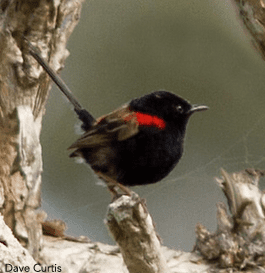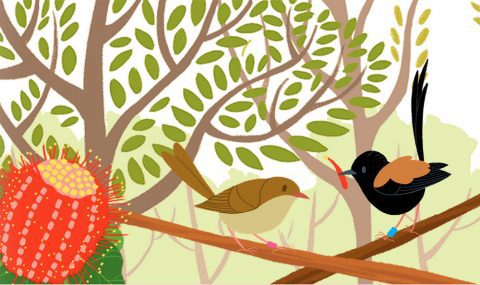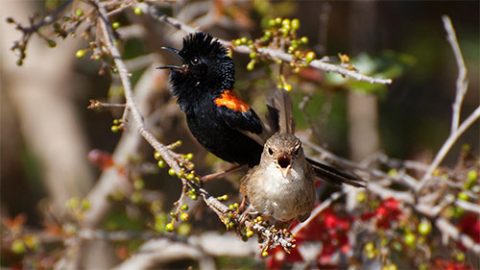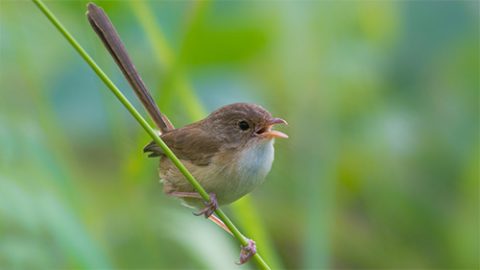In a Flashy Species, Drab Young Males Find Their Own Route to Success With Females
By Pat Leonard
March 9, 2017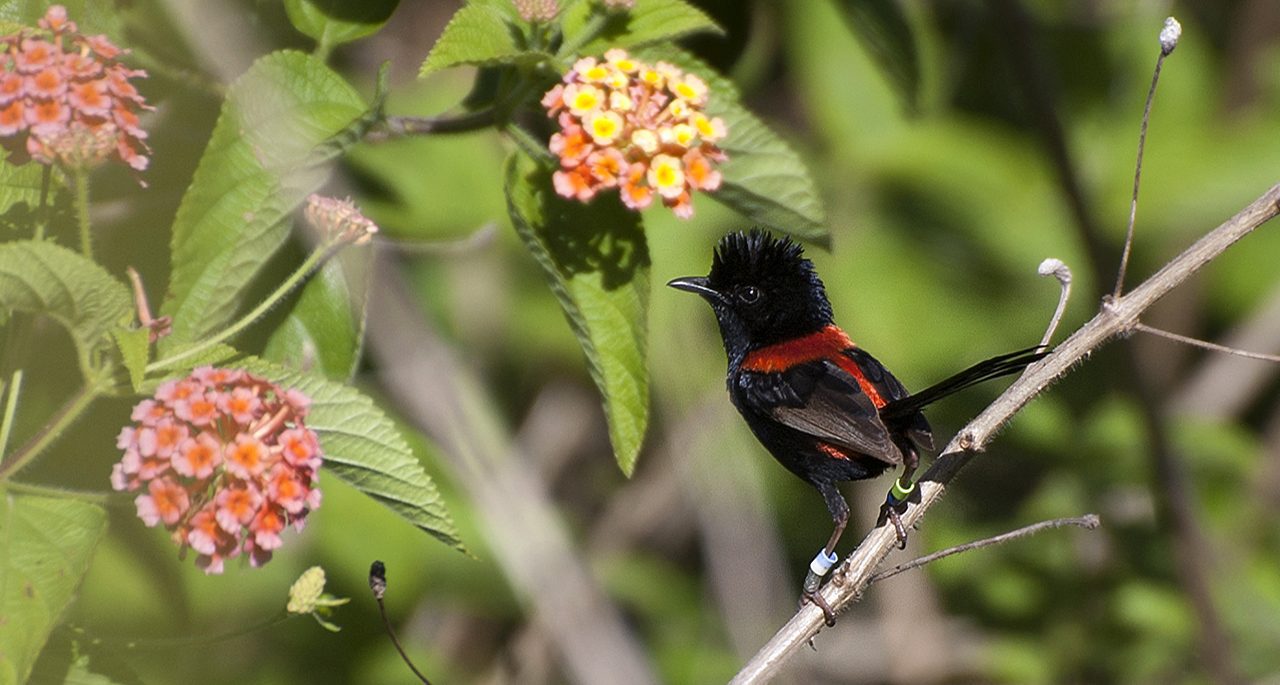
Just for a moment, think back to those hormone-fueled years of teen angst when personal relationships hijacked rational thought and sparked endless hallway drama. In the competition for female attention, it was usually clear that the the captain of the football team had much better odds than the skinny chess club whiz. And ultimately, the females called the shots.
Male Red-backed Fairywrens feel the same pain.
They’re tiny Australian songbirds (sometimes likened to chickadees of the outback). Males come in two forms: the gorgeous mature males with gleaming red-and-black plumage (the “attractive” ones); and young brown males (the “unattractive” ones) that have yet to acquire their stunning plumage and look pretty much like females.
Past studies have made it clear female fairywrens are more attracted to males with red-black plumage. The red-black males nearly always sire way more offspring than the brown birds. They pair up and raise young with a long-term social mate, but they also court and mate with every willing female they can find (extrapair paternity is the scientific term for this philandering). But the brown males are not completely shut out—they can still pair up with a female and sire offspring.
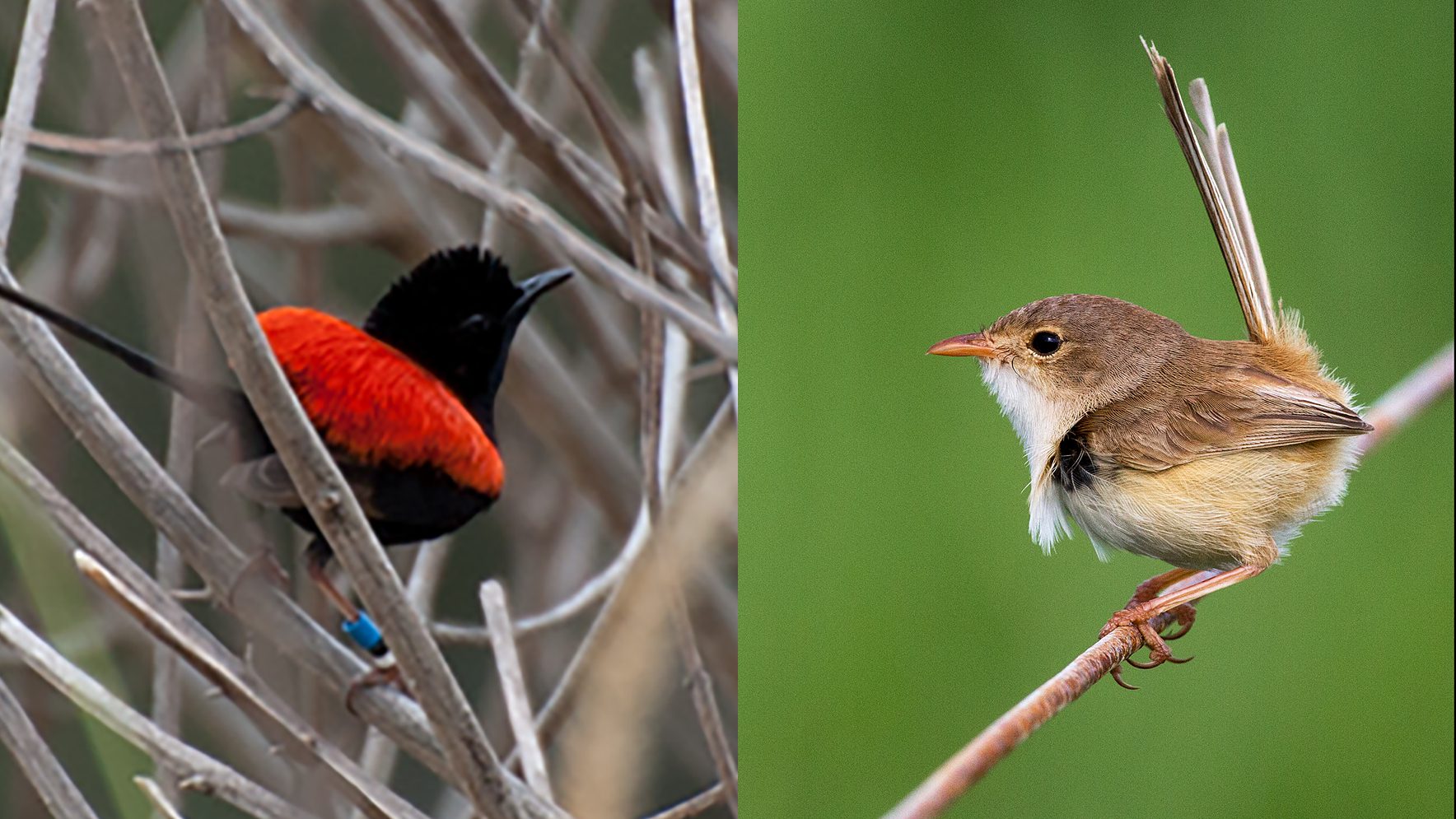
Scientists studying a population of banded Red-backed Fairywrens near Cairns, Australia, have found that the two types of male employ drastically different strategies for mating success. Their work was published in the January issue of Biology Letters.
“The brown males stay close to home, sing more duets with their mates, guard their mates more, and take good care of their young,” explains lead author Jenélle Dowling, who was a Cornell Lab postdoctoral researcher at the time of the study. “The red-black males spend 98% of their time seeking out other females to mate with, putting on elaborate courtship displays all day long, rarely guarding their mates or taking care of the young.”
There’s also an in-between stage for the two behaviors. Some young males (less than two years old) develop red-black plumage early. They do some mate guarding and some displays, though much less of the latter than their older brothers. By human standards, these young guys are both flashy and responsible—they seem like the better partners. But when the brown males inevitably mature and take on their red-black plumage, they switch strategies and start playing the field, too.
This difference between young and old neatly mirrors a widespread pattern long noted by animal behaviorists. In species where males compete intensely for mates, they tend to be flashy and focus their energies on courtship, spending less time caring for young. Greater Sage-Grouse, Ruby-throated Hummingbirds, and the spectacular birds-of-paradise are prime examples of flashy males that do almost nothing to help raise young. In species where there’s less intense competition, the sexes are more similar and males tend to be more equal partners in caring for the pair’s young—much as the subadult fairywrens do. Albatrosses, penguins, and other seabirds are classic examples of this approach.
Study coauthor Mike Webster of the Cornell Lab has been studying Red-backed Fairywrens for 13 years.
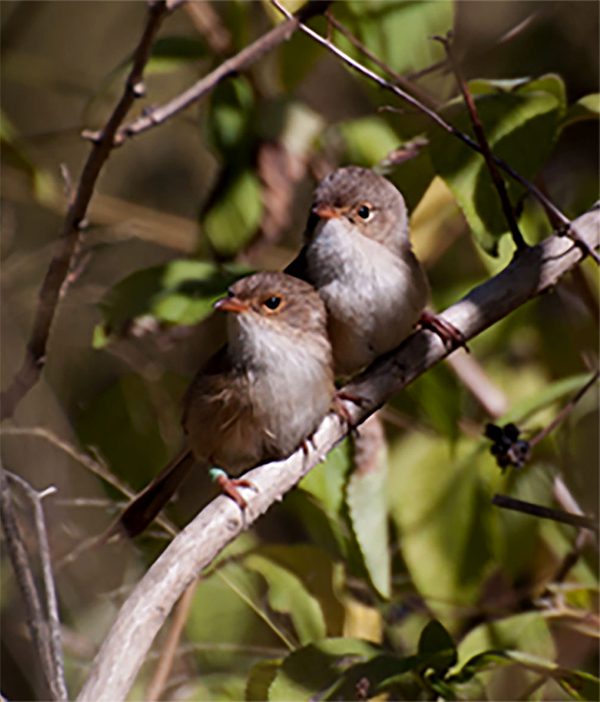
“The overarching goal is to understand variation among individuals in terms of their behavior and reproductive tactics,” Webster explains. “We want to know what behaviors the two types of males adopt, what the underlying neurological and physiological mechanisms are that dictate those behaviors, and the consequences of those behaviors.”
Research by Webster and his colleagues has determined that testosterone is closely tied to plumage. The young brown males have less testosterone than mature males, so they likely don’t feel the urge to perform mating displays or seek out multiple females.
Researchers also want to understand the female fairywren’s role in this unique system. Make no mistake—she is the one choosing which males to mate with, in part by “critiquing” the choreographed displays of the males courting her. The males are doing the best they can with what they’ve got.
Related Stories
“The mature red-black males fly up to a female in a very specific way—a very undulating flight,” Dowling says. “They also puff up the red feathers on their backs, chase the female around, and bring her things. Many species of fairywrens do something called the ‘petal display.’ They carry a flower petal in their beak and the petal is always coordinated with the color of their back feathers. Red-backed Fairywrens bring pink, red, or whitish petals. He does the same thing with food, such as red berries.” If a male gets any of these details wrong, he may lose his chance to mate no matter how brilliant his red-black plumage.
A big piece of the puzzle, yet to be fully understood, is what benefit females get from choosing to mate with either the mature red-black males or the young brown males. In classic theory, the flashy males with perfect display moves offer top-shelf genes to the females, making it more likely her young will be similarly successful. Less attractive males can’t compete in the looks-and-moves department, so they try to make up for it by giving a helping hand at the nest, making it more likely that the female’s young will survive and thrive. What’s missing, and what keeps Webster coming back for more research, is the proof that either of these approaches is actually working.
“Do they have healthier offspring? Do they produce more offspring? The next step is to delve deeper into the underlying mechanisms for the behaviors such as gene expression in the brains, and differences in sperm production,” Webster says. “The genetic tools are now available that we didn’t have even a few years ago.”
What are the males looking for in the females? Female Red-backed Fairywrens don’t have a range of plumages that make them attractive or unattractive to the males. One as-yet untested hypothesis is that older females are more attractive because of their past experience raising young. It’s just one of many questions still to be explored with this intriguing little bird.
“You get really attached to these little guys,” Dowling admits. “You get to know them, generation after generation. It’s like a novel covering multiple generations and their crazy sexual dramas—someday I’d like to write this up as a novel or a soap opera!”
Reference
Jenélle Dowling and Mike Webster. 2016. Working with what you’ve got: unattractive males show greater mate-guarding effort in a duetting songbird. Biology Letters.

All About Birds
is a free resource
Available for everyone,
funded by donors like you
American Kestrel by Blair Dudeck / Macaulay Library

